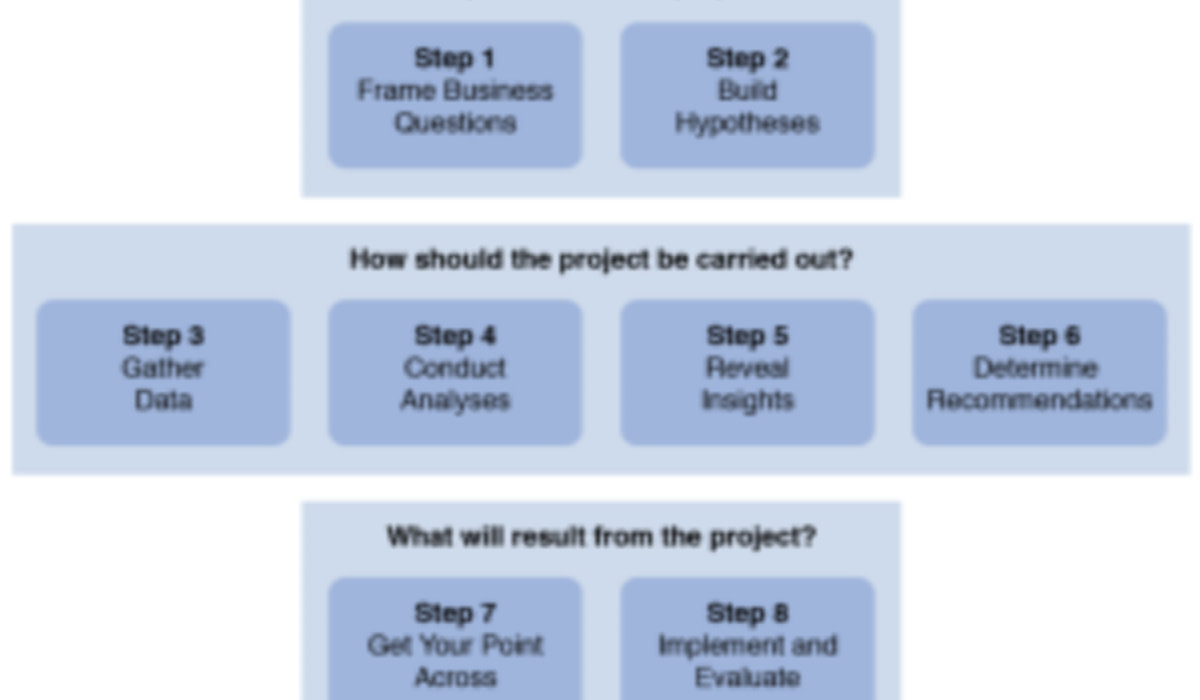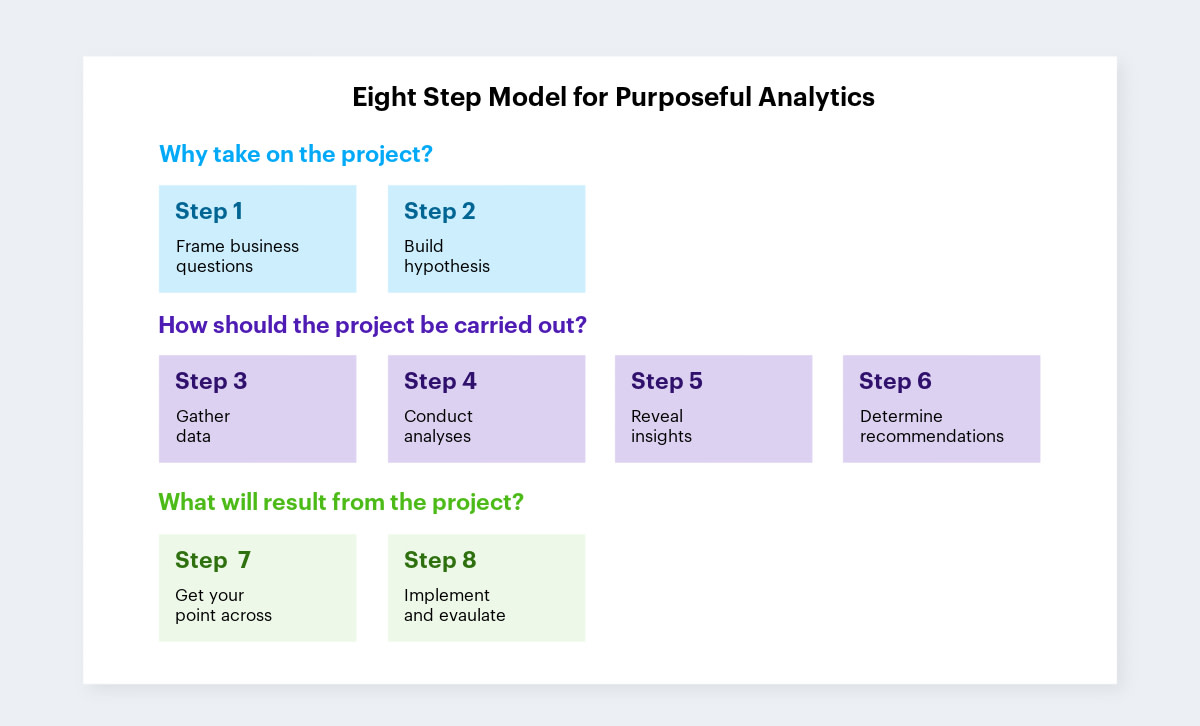The Eight Step Model for Purposeful HR Analytics
Looking for an HR analytics model? Learn the 8 step model for purposeful HR analytics with Jonathan Ferrar here.

Jonathan Ferrar is a respected consultant, speaker, and author in HR strategy, workforce analytics, and the Future of Work. This article is adapted from his newly released book, The Power of People: Learn How Successful Organisations Use Workforce Analytics To Improve Business Performance, and originally appeared on his LinkedIn Pulse.
During our research [for The Power of People: Learn How Successful Organisations Use Workforce Analytics To Improve Business Performance] we found numerous examples of successful analytics projects. In each case we discovered that success was derived because there were two essential components: firstly, a rigorous and meticulous model was used and secondly, a strong project sponsor was identified for the project.
In this article I’ll describe the first of these.
The Eight Step Model for Purposeful Analytics
The first iteration of what became the Eight Step Model For Purposeful Analytics was defined early in our research in the first quarter of 2016. I presented it as part of a keynote presentation at the People Analytics 2016 event on 27 April 2016 (see David Green’s LinkedIn article) and with the feedback I received from experts, such as Mark Berry (see tweet), we tested the model and discussed with numerous other practitioners. The model changed slightly and we ended up with the “Eight Steps”:

Step 1: Frame Business Questions
In essence, know why you are undertaking the specific analytics exercise. Or, in other words: “What is the business reason?” This step must come first to avoid undertaking the wrong analysis and also to give the project the best chance of success. A clearly framed and well-defined business question ensures that the analytics work is actually necessary.
Step 2: Build Hypotheses
Building and clarifying a hypothesis is important for “testing” beliefs about the causes of business issues. Strong hypotheses should guide the data gathering and analysis phases in a way that links to business questions. Formulating hypotheses in advance helps guard against reaching conclusions based on observed relationships in your data that result from chance instead of genuine underlying relationships.
Step 3: Gather Data
The data gathering step requires identifying the most relevant data for testing the hypotheses and determining whether data quality is sufficient to proceed. Decisions need to be made about whether to gather existing data, collect new data, or do both.
Please note that this step is Step 3 — NOT Step 1. Too often we found that people wanted to start their workforce analytics with gathering data and analysing it without first asking ‘why’. This wonderful quote from Josh Bersin, perfectly illustrates why you should always start with ‘why’:
“After a recent speech, an attendee came up to me and said, ‘I can predict attrition for my firm to 92 percent accuracy.’ I said, ‘Wow! That’s great. Is attrition a problem for your firm?’ And she said, ‘No, not really.’”
Step 4: Conduct Analyses
This is where the methodology and statistics are applied to data to test the hypotheses and provide the basis for insights. Without this step, the fundamental building blocks of any analytics project simply do not exist; without performing analysis, patterns in data will never be discovered.
Step 5: Reveal Insights
Workforce analysts must uncover insights for two main reasons. First, analysts cannot assume that project sponsors and stakeholders are able to derive the most pertinent insights themselves. The second reason is more subtle: If analysts present only data and analysis without insights, executives and project sponsors might draw their own conclusions to best fit their preconceptions.
Step 6: Determine Recommendations
Analytics projects are all about helping the business improve its performance, so although insights are interesting, only recommendations will help improve the business. Recommendations are what business leaders and, in this case, project sponsors need. A well-articulated recommendation makes a great impetus for change. Some analytics projects fail at this stage simply because recommendations are not expressed clearly.
Step 7: Get Your Point Across
All analytics projects have a moment of truth. This often happens as you communicate the outcomes of the project to the sponsor or other stakeholders, to get your point across. This is the moment when you are able to inform decision making. Experienced practitioners and leaders use storytelling and carefully consider their visualisations to create the desired impact for their message.
Step 8: Implement And Evaluate
The implementation and evaluation step has three discrete aims. First, it ensures that decisions are made as a result of your project. Second, it formulates actions for implementation based on those decisions. Finally, it facilitates evaluating the project against whether it returned value to the organization.
Summary
The Eight Step Model for Purposeful Analytics has been developed to help workforce analytics practitioners, HR professionals and leaders be successful in their endeavours. With the research we undertook, we have found that projects are most successful when all eight steps are taken in this sequence.
Please note that The Eight Step Model for Purposeful Analytics is a copyright of the authors of the book, The Power of People: Nigel Guenole, Jonathan Ferrar and Sheri Feinzig.
Image has been republished with permission from the author.
Get Outsmart content straight to your inbox
Subscribe to the People Insights Monthly newsletter for actionable insights and stories.
Subscribe now